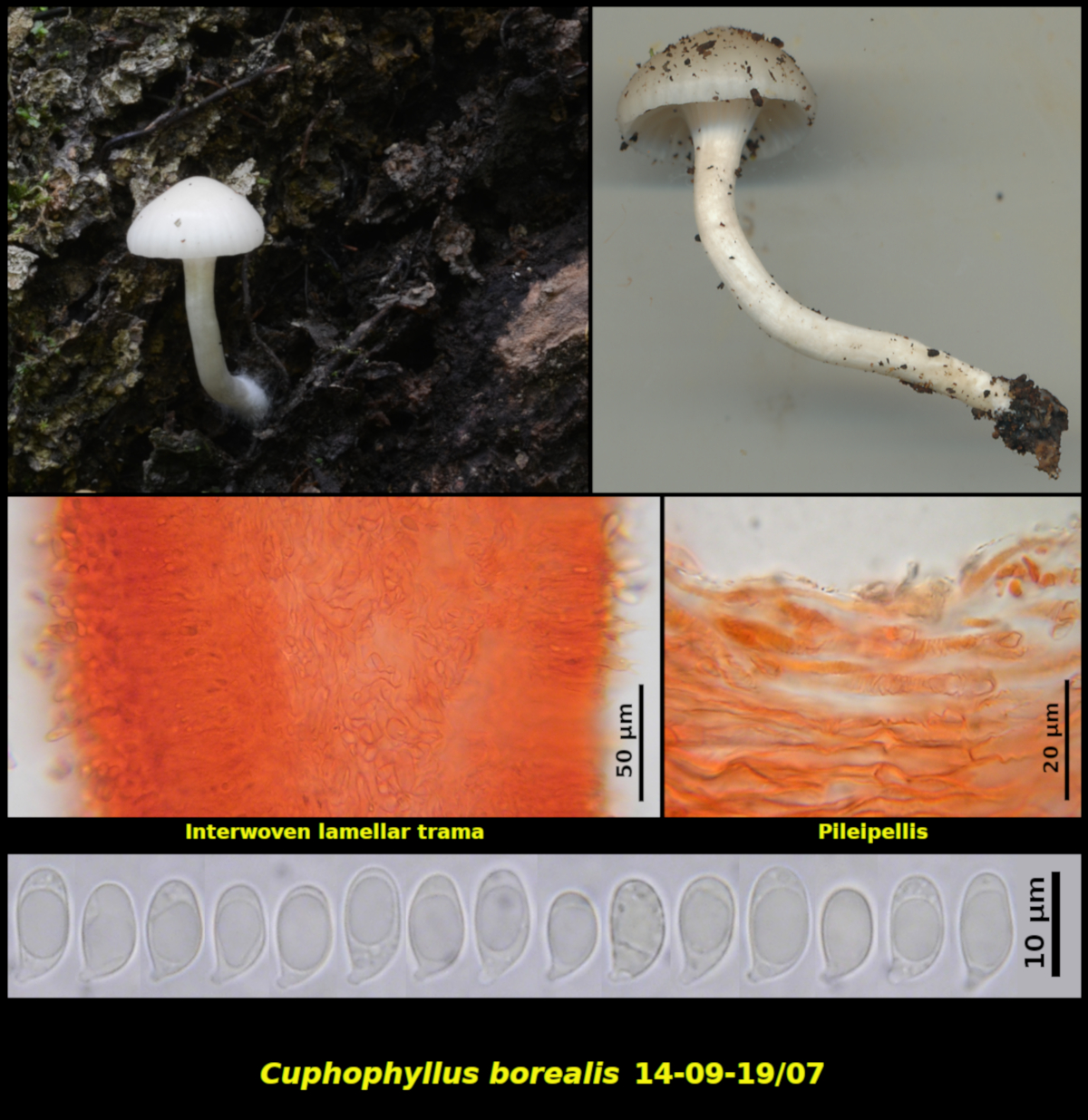Fleshy Fungi of New Brunswick >>
Cuphophyllus borealis
Cuphophyllus borealis (Peck) Bon ex Courtec.

Solitary on rotting wood at the base of a large Fagus grandifolia, Hell’s Gate Hardwoods Protected Natural Area, New Brunswick (14-09-19/07).
Basidiospores white in spore print, ellipsoidal to subdacryoid, smooth, inamyloid, 7.7-10.5 X 4.7-6.0 µm, D/d = 1.59-2.05 (average[32]: 9.3 X 5.2 µm, Q = 1.79). Basidia long-clavate, 4-spored, without a basal clamp connection. Cheilocystidia and pleurocystidia lacking or represented only by scattered filamentous elements. Pileipellis an ixocutis, gelatinous, 10-20 µm thick, without clamp connections. Stipitipellis a cutis, not gelatinous.
Cuphophyllus borealis is one of several species in the C. virgineus group having white basidiomata. The group is taxonomically difficult, with European and North American authors often in disagreement over species concepts. According to North American authors such as Bird & Grund (Nova Scotian species of Hygrophorus, The Nova Scotia Museum, 1979) and Hesler and Smith (North American Species of Hygrophorus, Univ. Tenn. Press, 1963) C. borealis has a pileipellis with a thin ixocutis while that of C. nivea is quite thick. These same authors consider C. virgineus to have a non-gelatinous cutis. Boertmann (The genus Hygrocybe, Fungi of Northern Europe, Vol. 1, 2000) treats C. virgineus as a species with an ixocutis and places C. niveus in synonymy with it. The species originally collected and described by Peck as Hygrophorus borealis and now placed in Cuphophyllus has been studied by Hesler and Smith and and seems to be a good fit for Collection 14-09-19/07 in most details. The one devient character casting some doubt on the identification of this collection is the apparent lack of clamp connections on all hyphae, something not noted by other authors. Its growth on rotten wood is also unusual for its genus.
Photo: D. Malloch (14-09-19/07).